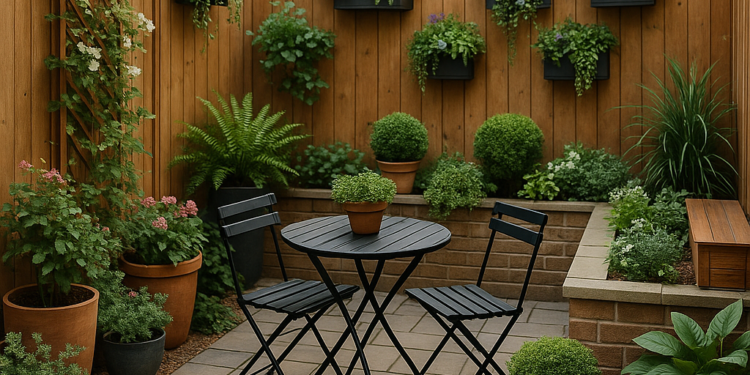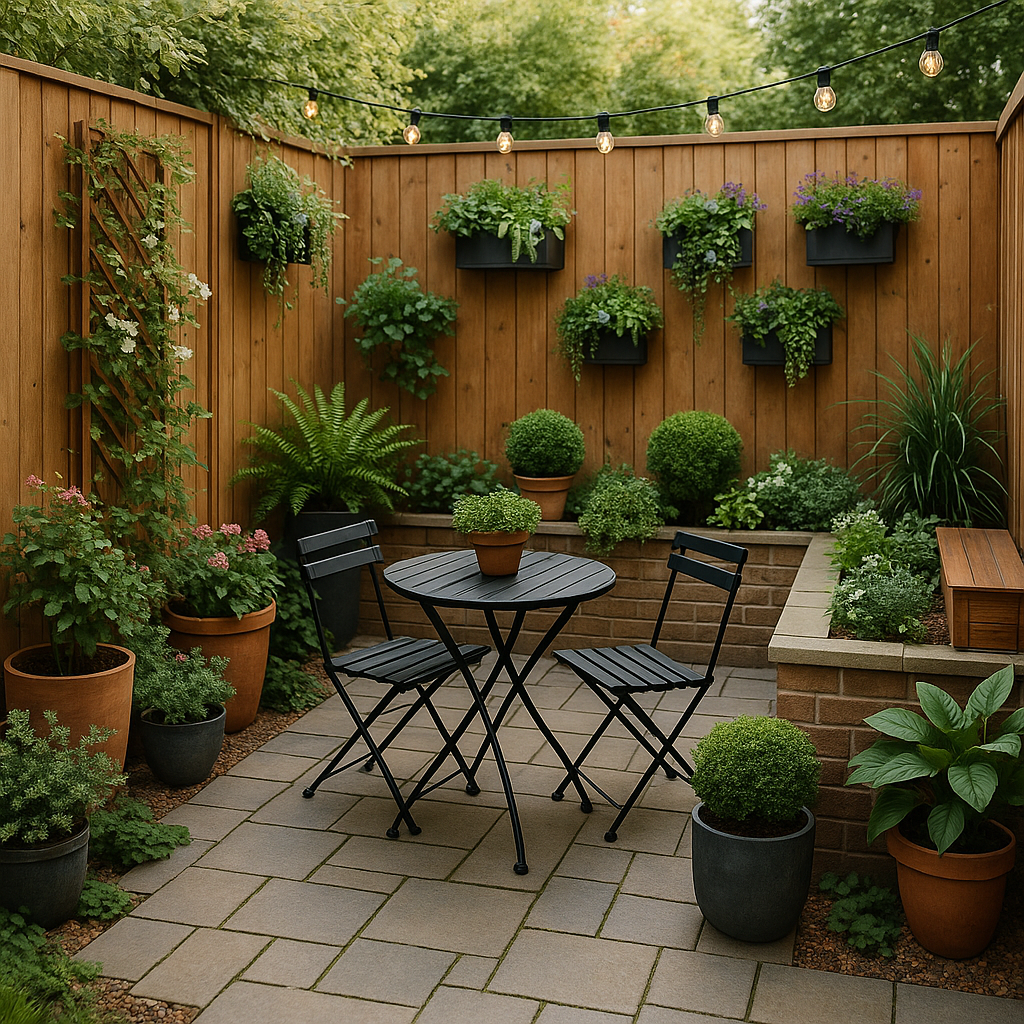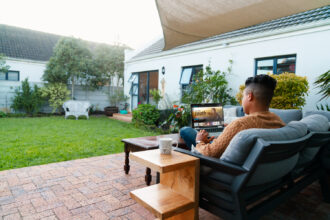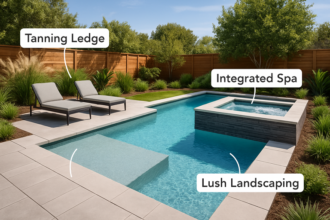Maximizing Small Outdoor Spaces: Smart Planting and Hardscape Planning

Table of Contents
- 1 Introduction
- 2 Assessing Your Space
- 3 Vertical Gardening: Utilizing Upward Space
- 4
- 5 Container Gardening: Flexibility and Variety
- 6 Multi-Functional Hardscaping
- 7 Creating Zones Within the Space
- 8 Incorporating Water Features
- 9 Sustainable Practices and Edible Landscaping
- 10 Lighting and Accessories
- 11 Conclusion
Introduction
Even the smallest outdoor space can be transformed into a serene haven with the right planning and thoughtful design. Whether you have a petite patio that fits a bistro table, a narrow side yard with limited sunlight, or a modest apartment balcony, making the most of its potential is all about intelligent use of every square foot. With a little creativity, outdoor spaces of any size can become welcoming escapes, bursting with life and style. Strategic planting and innovative hardscape solutions create an inviting and functional retreat, perfectly adapted for your everyday life and decorative preferences. For those seeking expert advice and execution, working with quality landscaping contractors can unlock professional-level results and lasting beauty, ensuring your project is approached with aesthetics and function in mind.
With attention to your compact space’s structure and plant life, you can enjoy a connected outdoor experience year-round, no matter how small the area. Smart layouts, versatile furniture, and sustainable landscaping practices all contribute to a welcoming, spacious, and entirely personal space. This comprehensive guide will walk you through practical and inspiring ideas, from choosing the right plants to clever hardscaping decisions, so you can maximize your small garden or patio and truly make it your retreat.
Assessing Your Space
Begin by taking stock of your outdoor area. Accurately measure the dimensions and observe the patterns of sunlight and shade throughout the day—some spots may bask in full sun for hours, while others remain shaded or dappled. Identifying these unique microclimates helps you select the best plants and features for each zone, ensuring your efforts are rewarded with thriving greenery. Note fixed elements such as fences, walls, doors, and built-in utilities, as well as existing plants and trees that could be preserved, rejuvenated, or used as focal points. Recognizing any constraints, like poor drainage, unsightly views, or limited access, is equally important so you can plan creative solutions from the start and avoid unnecessary frustration later.
Analyzing your space’s bones—its permanent structures, natural light, wind exposure, and hidden challenges—gives you a clear foundation for your design. Keep an eye on sightlines, too: thoughtfully arranging seating or planting can highlight or obscure certain areas, and sometimes, a single focal point like a distinctive pot or sculpture can make a small garden feel larger and more cohesive, leading the eye through the space with intention and charm.
Vertical Gardening: Utilizing Upward Space
When square footage is tight, look up! Vertical gardening instantly expands your planting capacity without taking up precious floor space. Wall-mounted planters, trellises, and even living walls are excellent for using bare fences or exterior walls that might be overlooked. Choose climbing plants like jasmine, clematis, or sweet peas that thrive in your climate and provide lush, colorful displays, adding visual excitement and fragrance at eye level and above. Hanging baskets and stacked planting shelves can also ensure that no inch goes unused, while maintaining clear, uncluttered paths below.
Vertical gardens do more than look beautiful—they also insulate walls, provide privacy, and can cool your space in summer by offering shade and humidity from foliage. Plus, by drawing the eye upward, they make a compact garden feel taller, airier, and more expansive than it is.
Container Gardening: Flexibility and Variety
Container gardening offers unmatched flexibility in any small space, allowing the cultivation of a range of plants on balconies, patios, or walkways. Select pots and planters in various shapes, sizes, and materials, suited to your chosen plants—deep containers are best for root crops and small fruit trees. At the same time, shallow trays are perfect for drought-tolerant succulents and groundcovers. Arranging containers at different heights using benches, wall shelves, or multi-level plant stands creates layered visual depth and maximizes growing space so that more plants can thrive in the same area.
Unlike traditional beds, container gardens allow you to easily refresh your display with seasonal color rotations, introduce new textures, or even change the layout when entertaining guests or hosting gatherings. Popular choices include herbs, compact vegetables (like cherry tomatoes or lettuce), small evergreens for structure, and flowering annuals for continuous pops of color and fragrance. Mixing edible, ornamental, and evergreen plants creates interest and ensures your garden shines every season, regardless of the weather.
Multi-Functional Hardscaping
Clever hardscaping is essential for compact areas. Incorporate built-in seating with hidden storage below to keep tools, outdoor cushions, or even small gardening supplies out of sight but within easy reach. Foldable or stackable tables and chairs are another game changer, bringing comfort and convenience when needed and freeing up valuable space when not in use. When choosing materials for paving, decking, or patio floors, consider pale colors, reflective surfaces, or light gravels that naturally brighten the area and visually expand the boundaries of your garden.
Durable, weather-resistant materials like natural stone, poured concrete, or composite decking ensure that your hardscape not only withstands the elements but also looks inviting for years to come. Creative installations, such as bench planters, built-in shelves, or modular decking, help your outdoor space keep up with changing needs and ensure every function is carefully considered.
Creating Zones Within the Space
Designating dining, relaxing, and gardening zones helps even the smallest patio feel organized, multifunctional, and inviting. Use visual cues such as contrasting flooring—pebbles, decking, or patterned tiles—to separate each area without physical barriers. Incorporate narrow paths or garden walkways to add intrigue, guide movement, and create opportunities for discreet plantings along the journey. Strategic lighting, whether a canopy of string lights above a dining nook or discreet solar stake lamps along a pathway, emphasizes each zone’s unique purpose and makes your space feel safe, accessible, and enjoyable day and night.
Defining distinct areas, even with subtle design tweaks like color themes or shifting materials, makes your garden seem larger, more intentional, and more welcoming to everyone who visits.
Incorporating Water Features
Even in a small space, adding water introduces calming sounds and gentle movement into the garden. A compact fountain, decorative birdbath, or modern water wall can serve as a centerpiece or quiet corner accent. Water features create ambience, mask unwanted noise from neighbors or traffic, and draw birds, butterflies, and pollinators, increasing biodiversity outside your door. Look for compact, low-maintenance designs that recycle water and require minimal cleaning, ensuring your oasis remains peaceful and not burdensome.
Solar-powered options are particularly well-suited for tight, sunny spaces. They add beauty and sustainability to your design without increasing energy bills. Many modern water features are plug-and-play, making them an easy upgrade for even the smallest patios or balconies.
Sustainable Practices and Edible Landscaping
Sustainability goes hand-in-hand with good design in outdoor spaces, helping both the environment and your garden’s longevity. Integrate edible plants—such as herbs, lettuces, compact berry bushes, or dwarf fruit trees—into borders, vertical gardens, and containers for a harvest that’s as beautiful as it is practical. Native plants are a smart choice, remaining drought-tolerant and disease-resistant while supporting local wildlife, such as pollinators and beneficial insects. Choose eco-friendly materials, such as reclaimed wood, bamboo, or permeable pavers, to minimize your project’s environmental impact and improve water drainage and management.
Composting bins and rainwater collection systems can be discreetly tucked into corners or behind screens to further green your garden. They will reduce household waste and provide valuable resources for plant health and growth without detracting from your design.
Lighting and Accessories
Effective lighting allows you to enjoy your outdoor space long after sunset, creating ambience and practical illumination. Combine ambient lighting, like weatherproof string lights, with targeted path lights and focused spotlights to highlight key design elements and improve safety. Mirrors and other reflective surfaces, strategically placed on walls or fences, bounce natural or artificial light into darker corners to create a feeling of openness, making the garden feel larger and brighter. Personalized touches such as colorful cushions, weatherproof rugs, outdoor art, or curated planters can express your taste, tie together different elements, and make your garden feel like a true extension of your indoor living space.
Thoughtful accessories add warmth, comfort, and individuality to your outdoor retreat, encouraging family members and guests to use it frequently and extend its use.
Conclusion
Transforming a small outdoor space is more than simply maximizing square footage—it’s about making every detail count while reflecting your unique style and needs. With creative planting strategies, smart hardscaping, and a personalized, sustainable approach, you can craft a welcoming retreat tailored to your lifestyle, no matter the size of your footprint. Whether you tackle the project yourself or collaborate with landscaping professionals, the result is an outdoor haven you’ll love to relax, dine, and entertain in year-round.







